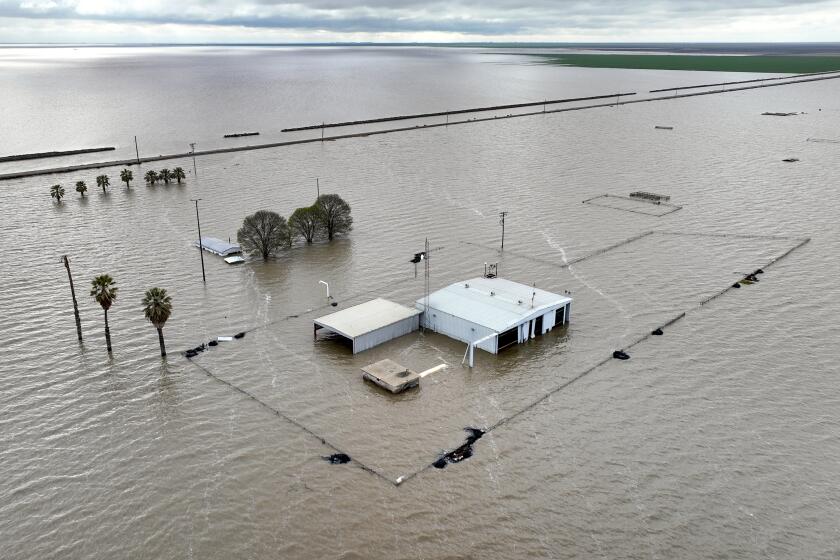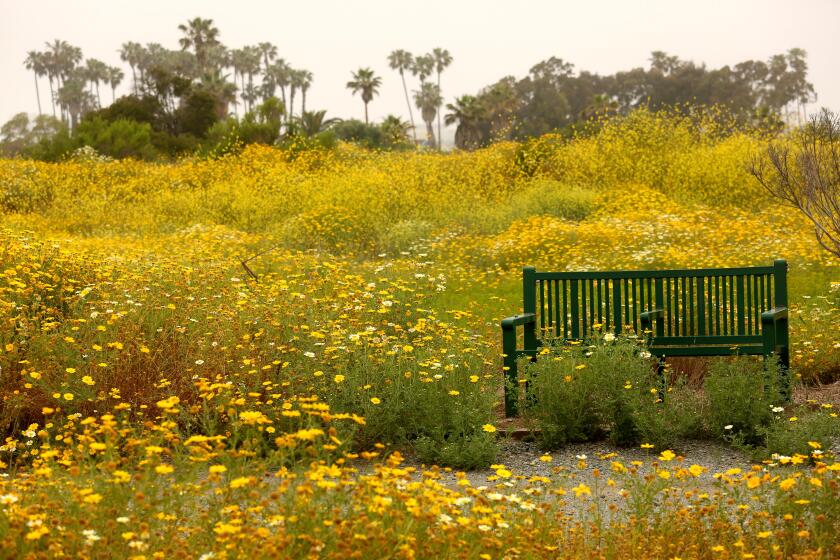Central Valley flooding offers birds bountiful water. Will it also poison them?
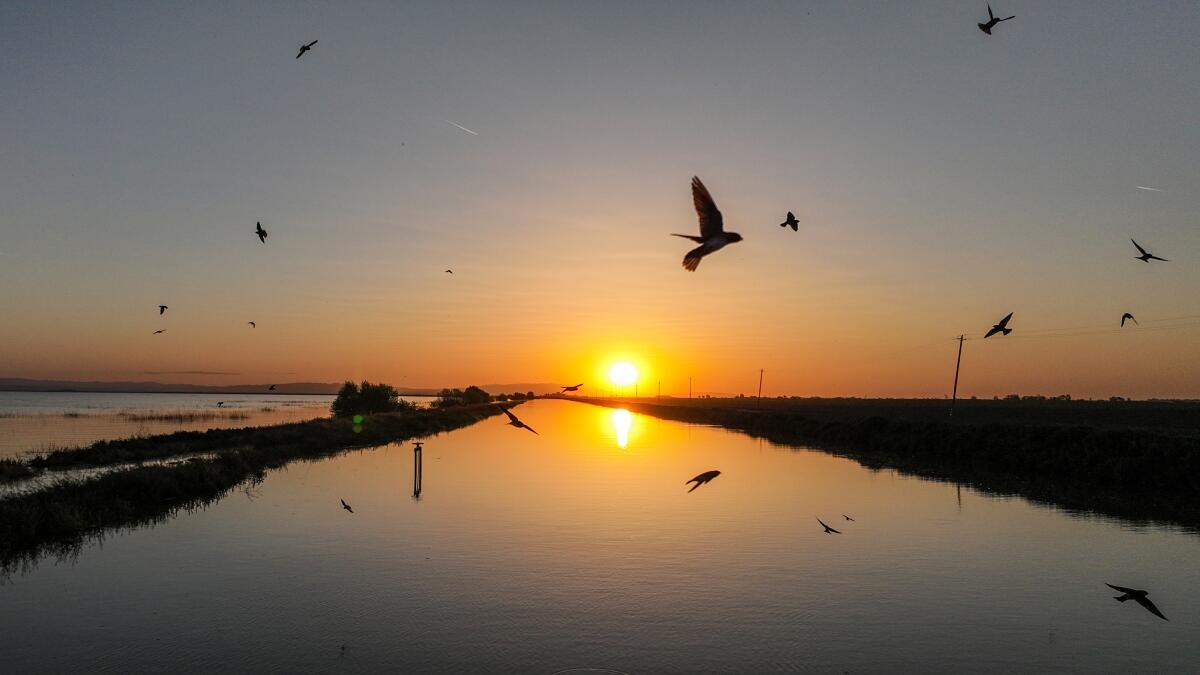
After struggling through years of punishing drought, California waterfowl and flocks of migrating birds are now enjoying a rare bounty of water as winter storms and spring snowmelt submerge vast tracts of Central Valley landscape.
But even as birders celebrate the return of wet conditions along portions of the Pacific Flyway, experts worry that this liquid bonanza could ultimately poison tens of thousands of the avians as temperatures rise and newly formed lakes and ponds begin to evaporate.
The concern: botulism.
“Botulism occurs naturally in the soil and in the Tulare basin,” said John Carlson, president of the California Waterfowl Assn. “When the water temperature heats up during the summer and gets stagnant, the botulism really kind of booms, and you can have multi-thousand-bird die-offs.”
Though fears of catastrophic flooding in the Tulare Lake Basin have largely diminished, state officials say we’re “not out of the woods” yet.
Carlson estimates there is a “high probability” of a die-off this summer.
That grim prognosis has added to the emotional whiplash bird lovers and wildlife officials have experienced in recent years as extreme climate variability has gripped the West Coast, alternately parching and starving waterfowl and providing them with a surfeit of habitat.
“We have loads of breeding ducks like cinnamon teal, gadwalls and mallards that are really utilizing these floodwaters all throughout the Tulare Lake basin area,” and beyond, said Matt Kaminski, a regional biologist for the hunting and conservation group, Ducks Unlimited.
But now relief from the rains is turning into trepidation as conditions ripen for a major outbreak.
Clostridium botulinum, a toxin-producing bacteria, flourishes in warm, shallow waters. The soil bacteria are taken up by aquatic invertebrates, which in turn are eaten by waterfowl and other birds.
In 2020, an estimated 60,000 birds died in the Klamath River basin when the few remaining wetlands of this once-rich marsh expanse dried up — forcing thousands of birds into small, muddy holes where exposure became rampant.
It’s an insidious and gruesome death for the poisoned birds, who become unable to move their muscles as the bacteria bind to nerve endings, impeding their ability to walk or fly. Eventually, they are unable to hold up even their heads — often drowning in the dank puddles they stopped at to quench their thirst.
Carlson said his organization is working with the California Department of Fish and Wildlife so that, should an outbreak occur, they’ll be ready to flush the wetlands with freshwater — if it’s available — and have crews ready to clean up carcasses as quickly as possible.
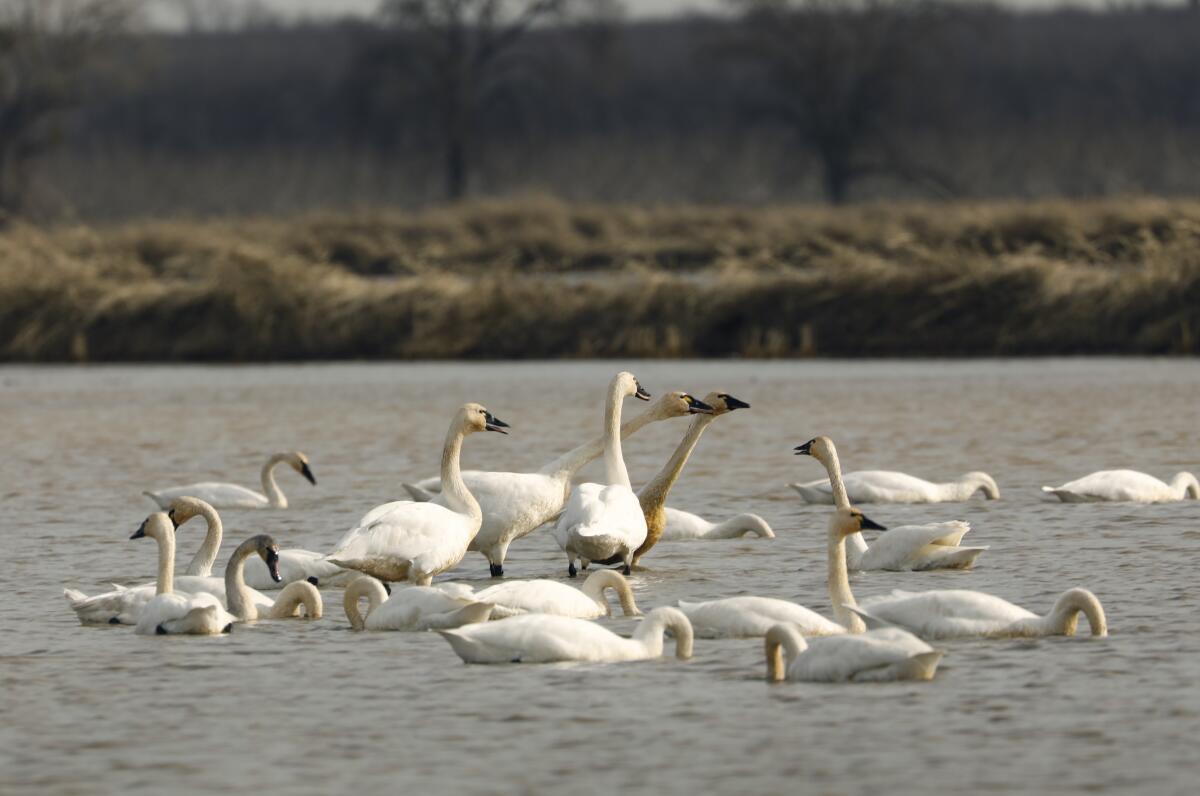
Cleanup is crucial, Carlson said, because botulism can be further spread by the fly maggots that infest dead birds. “Live birds see those maggots and say ‘that’s a good meal’ and they start eating those maggots. Those maggots have botulism in them.”
Carlson said he is hopeful the summer stays cool — which would lessen the threat. And if he had to choose between a botulism outbreak and another drought, he’d take the outbreak.
“We have approximately 6 million ducks and geese come down in the winter every year,” he said. “If you lose 50,000 to botulism, that’s tragic. But it’s nothing compared to the hundreds of thousands, maybe millions you’ll lose if there’s no water and they’re displaced.”
A judge ordered the state to suspend any project activity and prepare a ‘legally adequate’ environmental impact report ‘if it chooses to proceed.’
As recently as December, wildlife biologists and birders were fretting about the drought’s impact on the well-being of birds migrating along the Pacific Flyway.
“The problem is that when they come here for the winter they need to have food and shelter and water to survive the winter,” Carlson said. “And so if one part of their life cycle is in horrible shape because of a drought, then when they go back up north to breed, if their body condition is in really bad shape, then you know you’re gonna have unsuccessful breeding and unsuccessful nests — the whole nine yards.”
Heavy rain and snow this winter brought a helpful reprieve.
“We had a colony of white-faced ibis nest, and we’re actually starting to see some of the young fledge,” said Miguel Jimenez, project leader for the Kern National Wildlife Refuge Complex.
In past years, he said, the ibises would either “just utilize this for a roosting site and wouldn’t nest because of the lack of water, or they nested but were unsuccessful in fledging out their young.”
He said they’ve also seen endangered tricolored blackbirds, which appeared to be tracking the invertebrates feeding in flooded wetlands, as well as “a bunch of broods of ducks swimming around — always cute and fluffy. ... The birds are definitely utilizing the flooded landscape on the refuge.”
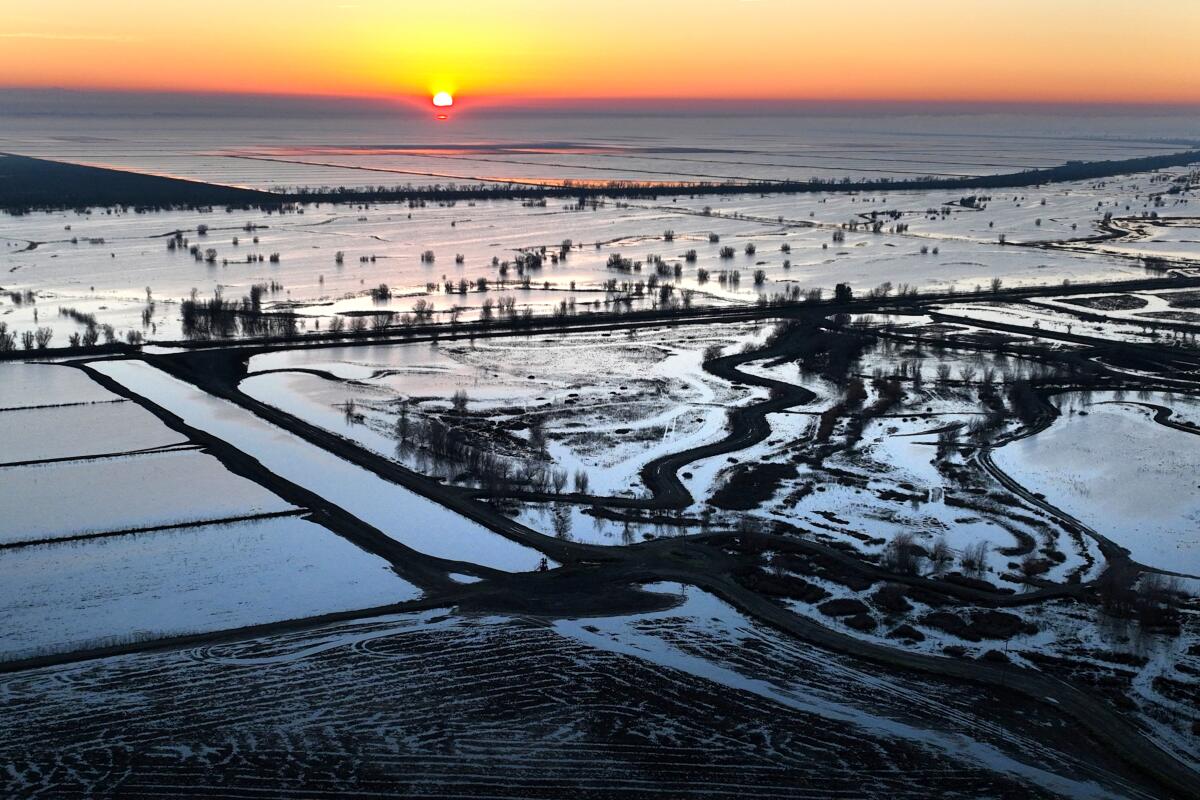
In the Tulare Lake Basin — where tens of thousands of acres remain flooded — botulism isn’t the only risk. Pesticides, so-called forever chemicals such as PFAS and PFOA, nitrates, heavy metals and arsenic in water sitting atop private farm fields could also affect the well-being of nesting and visiting birds and other wildlife.
Most experts say they believe that water will persist in the basin for another year to 18 months, assuming a normal amount of rain this winter. That could also cause problems for other species, such as the endangered blunt-nosed leopard lizard, found only in the San Joaquin Valley.
Jimenez said that while the flooding is unlikely to exterminate the species entirely, it will put on “the squeeze.”
What the wet conditions will mean for birds and other wildlife in the long run remains unclear.
“Are these flooded areas going to have the food resources and, you know, allow these ducklings to hatch?” said Ducks Unlimited’s Kaminski. “We haven’t had this kind of water resource for 40 years. And this is a huge magnet, right? Is it a trap? We don’t know.”
